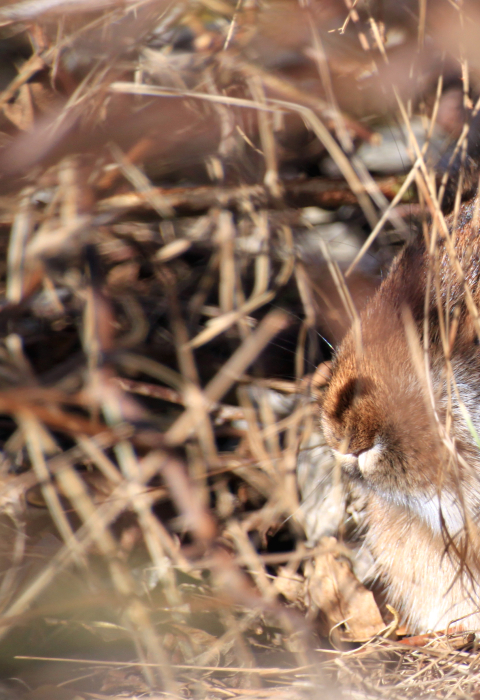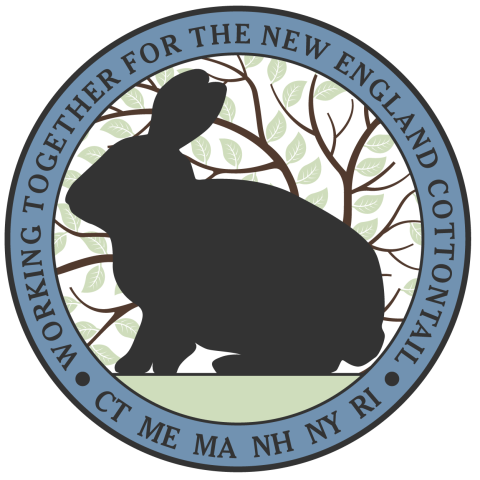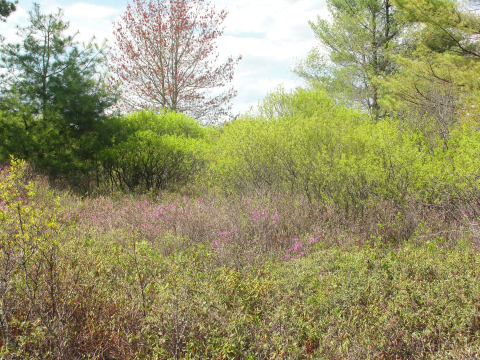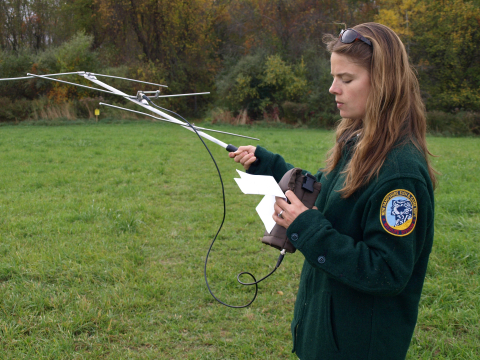This Cottontail Needs Early Successional Habitat
The New England cottontail lives in parts of Connecticut, Maine, Massachusetts, New Hampshire, Rhode Island, and New York east of the Hudson River.
A major threat to the cottontail is an ongoing loss of its early successional habitat: small openings in areas of older forest and dense patches of shrubs and small trees, the kind of cover where rabbits can find food, rear young, escape predators, and survive winter's snow and cold.
This dwindling of habitat happens as the region's forests grow older and as humans suppress the natural disturbances that once created an ongoing supply of young forest and shrubland.
The brochure Restoring a Rare Rabbit has more information. Conservationists' efforts to help the cottontail are also explained in an article "Saving a New England Native".
Learn more about the species' biology and life history.
Partners Working Together
State and federal agencies, land trusts, towns, companies, and private landowners cooperate to make habitat for New England cottontails: young forest and shrubland that also benefits the many other mammals, birds, reptiles, and pollinators that need similar cover.
Best Management Practices for the New England Cottontail provides detailed advice on creating and renewing habitat.
The New England Cottontail Conservation Initiative publishes a newsletter informing the public on how partners are working to help New England's native rabbit. (See the Resources section of this website and search in the "Newsletter" category.)
Many Threats
New England cottontails are in trouble. Most live in scattered, isolated populations, and over the years their numbers have continued to fall.
Why? Because humans have converted much of the land into housing and other developments, plus built roads that prevent the rabbits from safely moving about. Another problem comes from competition with the much more numerous eastern cottontail, a related rabbit from the Midwest that was brought into the region decades ago.
The New England cottontail suffers from a lack of connection between small isolated populations, making it hard for rabbits to leave the area where they were born and mate and share genes with other New England cottontails. And since overall numbers are small and on the decline, disease outbreaks can endanger the entire population.
Research Directs Conservation
Biologists and habitat specialists follow a Conservation Strategy for the New England Cottontail, developed in 2012 and evaluated and updated regularly. The strategy is based on the "adaptive management" concept, which allows for changes as research findings and new information point to better ways of helping New England's native rabbit.
Researchers use DNA analysis of rabbit droppings to find out where New England cottontails live. They also monitor radio-collared New England cottontails to learn how the rabbits move across the landscape and interact with other animals, including predators and non-native eastern cottontails.
Biologists have identified Focus Areas where New England cottontails remain most abundant. Conservationists concentrate their efforts to protect, create, and renew habitat in those areas.
A zoo-based conservation breeding program produces New England cottontails for reintroduction into the wild, both to boost the health of small, isolated populations and to start new populations in recently created habitat.
“It makes you feel good to be able to help the rabbits,” says Connecticut landowner Tom McAvoy, who has created dozens of acres of prime habitat on his farm, “especially when you know that so many other kinds of wildlife, such as songbirds, need the same kind of cover.”




